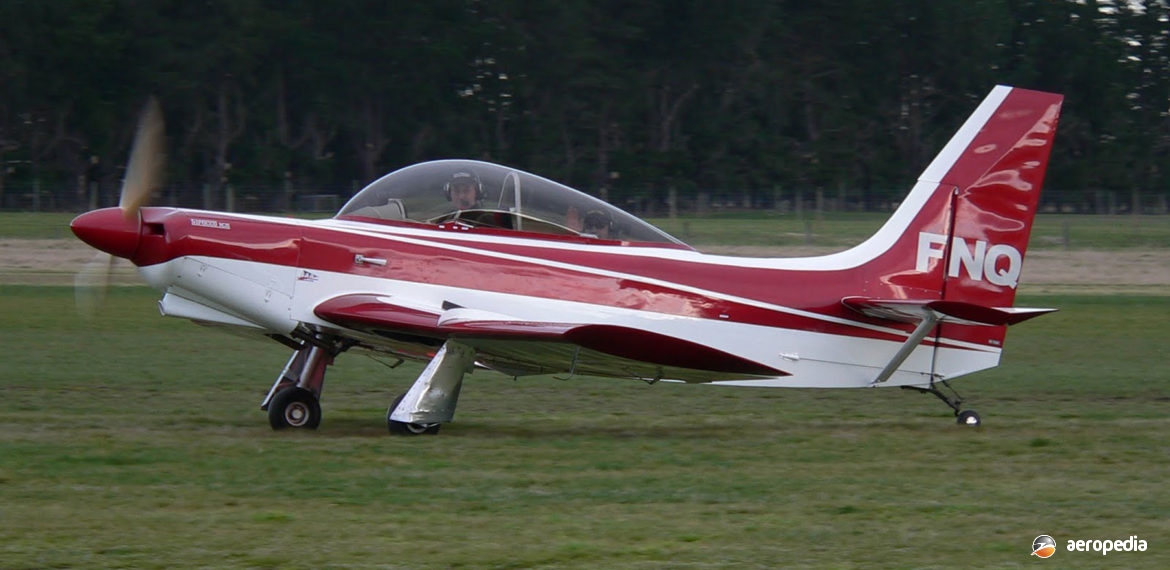Photograph:
Jurca MJ-5 Sirocco ZK-FNQ (c/n AACA/601) at Rangiora, New Zealand in August 2010 (NZCIVAIR)
Country of origin:
France
Description:
Two-seat light monoplane
Power Plant:
One 86 kw (115 hp) Lycoming O-235-C2B four-cylinder horizontally-opposed air-cooled engine
Specifications:
- Wingspan: 7 m (23 ft)
- Length: 6.15 m (20 ft 2 in)
- Height: 2.6 m (8 ft 6¼ in)
- Wing area: 10 m² (107.64 sq ft)
- Max speed at sea level: 235 km/h (146 mph)
- Cruising speed: 215 km/h (134 mph)
- Service ceiling: 5,000 m (16,400 ft)
- Time to climb to 1,000 m (2,380 ft): 4 mins
- Endurance: 4 hrs 20 mins
- Empty weight: 430 kg (947 lb)
- Loaded weight: 680 kg (1,499 lb)
History:
On 27 June 1956 the prototype of a single-seat light monoplane, designed by Marcel Jurca for amateur construction, was flown in France. Certification was obtained within a short period and examples of two models of the aircraft, known as the MJ-2 and MJ-20 Tempete, have been built throughout the world. Subsequently a two-seat development, known as the MJ-5 Sirocco, aimed at the club training and touring aircraft market, appeared.
The prototype Sirocco was flown for the first time on 3 August 1962 powered by a 78 kw (105 hp) Potez 4 E20 engine. After some test flying the aircraft was fitted with a 119 kw (160 hp) Lycoming O-320 engine, and in 1966 a retractable undercarriage was fitted. Later again it was fitted with a 134 kw (180 hp) Lycoming engine.
The Sirocco received a full Certificate of Airworthiness in France so it could be used by aero clubs, and was fully aerobatic. The fuselage was of wooden construction, mainly spruce, with plywood skinning and metal fittings similar to those in a Jodel, being a deep fuselage to accommodate a tandem cockpit. The wing was also of wooden construction with fabric covering, being flat, without dihedral. The undercarriage was retractable by hand with 24 turns. Engines ranging from a 67 kw (90 hp) Continental up to a 164 kw (220 hp) Franklin could be installed. Fuel capacity was 38 litres (8.35 Imp gals) in the fuselage and there were two wing tanks.
A number have been built by amateur constructors throughout the world, including Australia and New Zealand. Examples completed in New Zealand have included ZK-DAF (c/n AACA/18) destroyed in an accident at East Taratahi in March 1978; ZK-ECW (c/n AACA/313); ZK-FNQ (c/n AACA/601); ZK-DYR (c/n AACA141/1), which later became ZK-EDQ, which was withdrawn from service in April 1983; and ZK-PTR (c/n AACA/148/1), the first New Zealand example flying in 1975 with a 112 kw (150 hp) engine.
First of the type registered in Australia became VH-URB³ (c/n 001 – ex VH-AJH ntu; VH-AHS ntu) to its owner at Kambah in the ACT. However, the aircraft hit power lines on 4 March 2007 at Tumut, NSW and was destroyed. Later the registration was allocated to a GA-8 Airvan.

